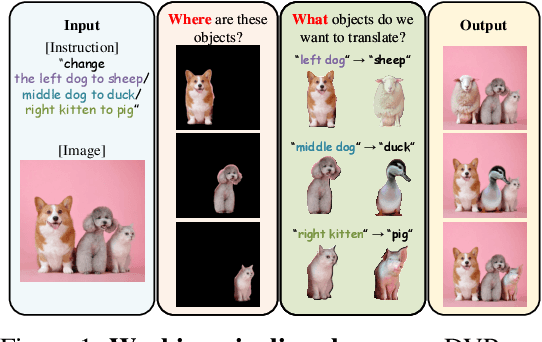Sohail Dianat
Shuffle PatchMix Augmentation with Confidence-Margin Weighted Pseudo-Labels for Enhanced Source-Free Domain Adaptation
May 30, 2025Abstract:This work investigates Source-Free Domain Adaptation (SFDA), where a model adapts to a target domain without access to source data. A new augmentation technique, Shuffle PatchMix (SPM), and a novel reweighting strategy are introduced to enhance performance. SPM shuffles and blends image patches to generate diverse and challenging augmentations, while the reweighting strategy prioritizes reliable pseudo-labels to mitigate label noise. These techniques are particularly effective on smaller datasets like PACS, where overfitting and pseudo-label noise pose greater risks. State-of-the-art results are achieved on three major benchmarks: PACS, VisDA-C, and DomainNet-126. Notably, on PACS, improvements of 7.3% (79.4% to 86.7%) and 7.2% are observed in single-target and multi-target settings, respectively, while gains of 2.8% and 0.7% are attained on DomainNet-126 and VisDA-C. This combination of advanced augmentation and robust pseudo-label reweighting establishes a new benchmark for SFDA. The code is available at: https://github.com/PrasannaPulakurthi/SPM
Text Is MASS: Modeling as Stochastic Embedding for Text-Video Retrieval
Mar 26, 2024Abstract:The increasing prevalence of video clips has sparked growing interest in text-video retrieval. Recent advances focus on establishing a joint embedding space for text and video, relying on consistent embedding representations to compute similarity. However, the text content in existing datasets is generally short and concise, making it hard to fully describe the redundant semantics of a video. Correspondingly, a single text embedding may be less expressive to capture the video embedding and empower the retrieval. In this study, we propose a new stochastic text modeling method T-MASS, i.e., text is modeled as a stochastic embedding, to enrich text embedding with a flexible and resilient semantic range, yielding a text mass. To be specific, we introduce a similarity-aware radius module to adapt the scale of the text mass upon the given text-video pairs. Plus, we design and develop a support text regularization to further control the text mass during the training. The inference pipeline is also tailored to fully exploit the text mass for accurate retrieval. Empirical evidence suggests that T-MASS not only effectively attracts relevant text-video pairs while distancing irrelevant ones, but also enables the determination of precise text embeddings for relevant pairs. Our experimental results show a substantial improvement of T-MASS over baseline (3% to 6.3% by R@1). Also, T-MASS achieves state-of-the-art performance on five benchmark datasets, including MSRVTT, LSMDC, DiDeMo, VATEX, and Charades.
Image Translation as Diffusion Visual Programmers
Jan 30, 2024



Abstract:We introduce the novel Diffusion Visual Programmer (DVP), a neuro-symbolic image translation framework. Our proposed DVP seamlessly embeds a condition-flexible diffusion model within the GPT architecture, orchestrating a coherent sequence of visual programs (i.e., computer vision models) for various pro-symbolic steps, which span RoI identification, style transfer, and position manipulation, facilitating transparent and controllable image translation processes. Extensive experiments demonstrate DVP's remarkable performance, surpassing concurrent arts. This success can be attributed to several key features of DVP: First, DVP achieves condition-flexible translation via instance normalization, enabling the model to eliminate sensitivity caused by the manual guidance and optimally focus on textual descriptions for high-quality content generation. Second, the framework enhances in-context reasoning by deciphering intricate high-dimensional concepts in feature spaces into more accessible low-dimensional symbols (e.g., [Prompt], [RoI object]), allowing for localized, context-free editing while maintaining overall coherence. Last but not least, DVP improves systemic controllability and explainability by offering explicit symbolic representations at each programming stage, empowering users to intuitively interpret and modify results. Our research marks a substantial step towards harmonizing artificial image translation processes with cognitive intelligence, promising broader applications.
 Add to Chrome
Add to Chrome Add to Firefox
Add to Firefox Add to Edge
Add to Edge